Patchwork and Politics
Published: Tuesday, 7th July 2020 13:33 PM
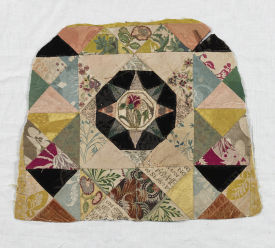
Many of the patchwork pieces and quilts in our Collection have little recorded provenance, and were made as domestic textiles that served a function - whether that was for decoration or to keep recipient warm. However, sometimes other aspects of the maker's life and beliefs can be evident in the fabrics, papers or designs of quilts, both historic and contemporary.
This 18th century patchwork chair seat cover contains small pieces of woven ribbon which reads 'No Popery No Slavery'. Dating from the Glorious Revolution of 1688, this phrase embodied the increasing public fear of a Catholic tyranny which reached feverish heights. At this time Charles II’s daughter Mary and her Dutch husband William of Orange were urged by English peers to overthrow James II’s rule which threatened to overturn previous restrictions on Catholic influence, worship and admittance to positions of power. This ribbon would have been a way of expressing Protestant support for the Revolution, a subtle and domestic expression of a huge political and religious event. This patchwork was made around 50-70 years after this ribbon was made, and so perhaps shows the political affiliations of the maker's family.
This quilt was made in 1996 by Michele Walker from household plastic bags with polyester wadding. Entitled Field Force, it as a diagonal strippy quilt and has ‘Tyre tread’ quilted patterns that represent tyres making their mark on the landscape of the South Downs and destroying the natural habitat.
This new quilt was made by Mary McIntosh for our Forties Collection, and is entitled 'Forty years of progress - Thatcher to May'. The artist writes: 'Looking back at the newspaper headlines of the major events of the last forty years, this quilt is a snapshot of the social and political changes that have taken place over our generation, and a conclusion that nothing really has changed. Our political divisions are as wide as ever and social progress is undermined by prejudice and hatred. Only our obsession with the royal family and national sporting glory unites the nation. The feminist hope that when women were in charge all would be well with the world has been truly dashed'.
The 1718 Silk Patchwork Coverlet is probably the most iconic item in The Quilters' Guild Museum Collection. The patchwork blocks themselves show an array of rural animals and geometric patterns and at first glance this piece is not particularly political. However, the light transmitted photography undertaken as part of the research of the coverlet revealed some of the papers, still intact in the piece, had legible printed text. One of these is related to Lord Haversham’s speech on the Union of Scotland and England in 1707. The Tories were particularly vocal in their opposition of the Union and John Thompson, Lord Haversham initially made his speech in February 1707. There were multiple tracts written against Haversham’s speech, particularly from a Scottish perspective. The response to Lord Haversham’s speech present in the papers of the silk coverlet was published in 1707 is sometimes attributed to Daniel Defoe.
This quilt is entitled 'House Block' was made by Michele Walker in 1999 and is the second quilt made in response to graffiti about the homeless in Brighton using the slogan: "No home, No vote, No job, No chance." It is constructed from plastic material, newspaper, and different threads and buttons. It is a hand and machine stitched, with hand stencilled lettering. This piece is part of The Nineties Collection.
 Field Force by Michele Walker
Field Force by Michele Walker
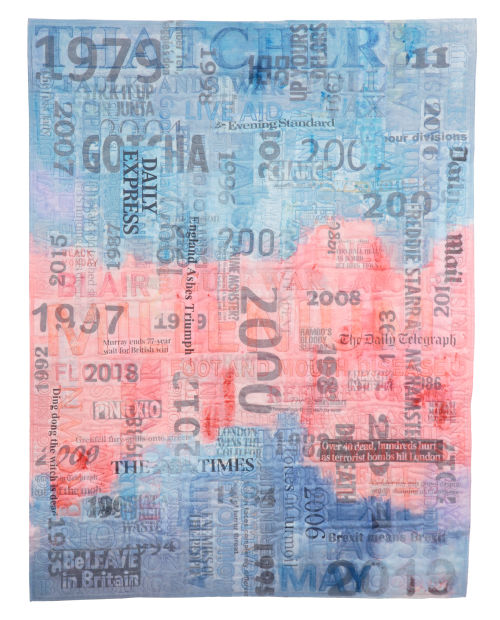 Forty Years of Progress
Forty Years of Progress
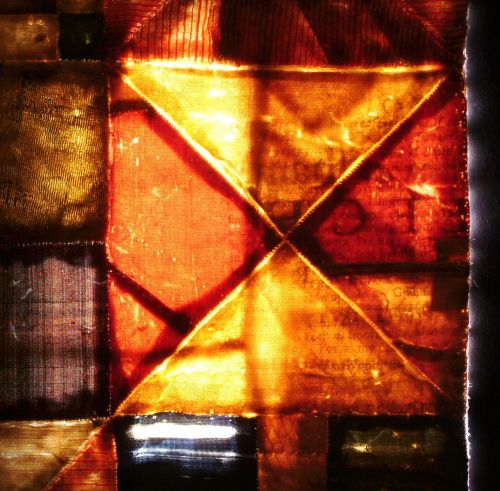 1718 Transmitted Light Photography block
1718 Transmitted Light Photography block
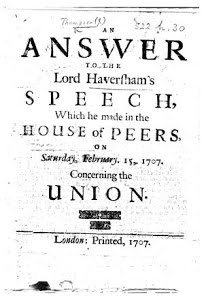 Response to Lord Haversham's Speech, 1707
Response to Lord Haversham's Speech, 1707
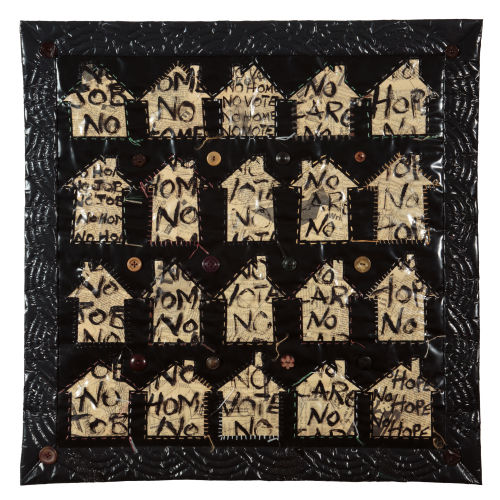 House Blocks by Michele Walker
House Blocks by Michele Walker